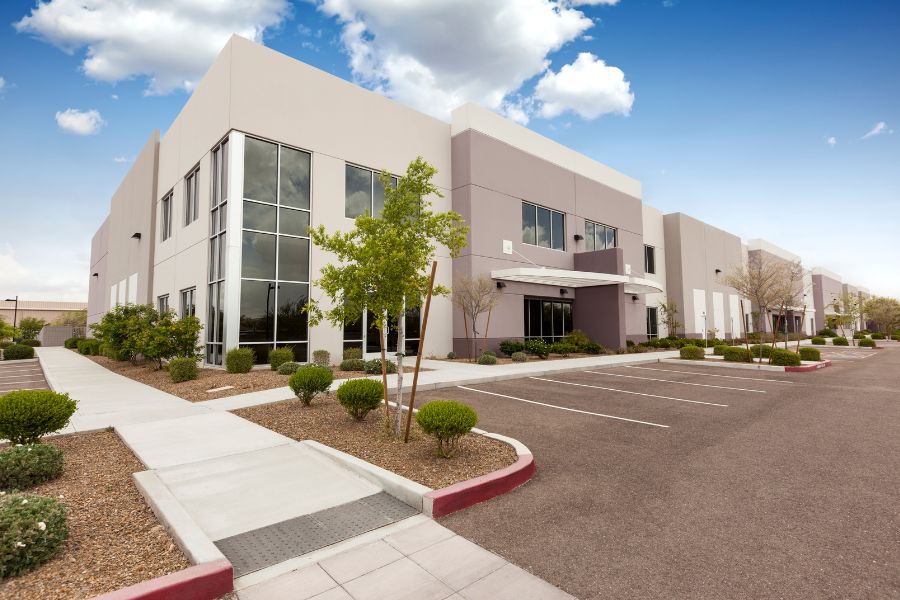9 Tips to Keep Your Facility Operating Efficiently

Eight years ago, I met a facility manager taking an all-too-common action in our industry, albeit for a very uncommon reason.
Like many in the industry, this seasoned facility manager wasn’t using his Building Management System (BMS), also known as Building Automated Controls, as designed and programmed. Unlike most, that decision resulted from a very strong desire not to be held under contempt of court charges. Again.
This facility manager overrode many of the automated features of his aging courthouse facility’s controls and operated most systems manually, in HAND mode, so that he could keep courtrooms comfortable for a heat-sensitive judge. If he was uncomfortable on the bench for prolonged periods, the judge in question said, the facility manager would be “heavily sanctioned.” One day, when the faulty, old HVAC and control systems were not operating to the fullest capacity, many of the courtrooms were extremely hot and humid. Our poor facility manager wound up in trouble with the law – well, at least until he promised to fix the BMS issues.
From this extreme example comes a universal industry truth: when people are involved, facility control systems can be a facility staff’s friend or very worst nightmare. With that in mind, here are nine tips on how you can use your BMS to your benefit – and that of your facility and its occupants.
1. People are the number one factor driving BMS inefficiency. Act accordingly.
BMS do account for human comfort, but the environments they create can’t be made to each individual’s liking. What constitutes an optimal environment varies by person and can be based on any number of factors, including age, gender and clothing type.
In general, let the automated control systems do their work – overriding setpoints and ignoring faulty sensors might lead to unfavorable consequences.
2. Listen to building owners – and be receptive to occupants’ feedback.
Building owners often have certain requirements for temperature and humidity, based either on codes or financial considerations. In these cases, facility managers’ hands are often tied.
When it comes to building occupants, though, facility managers have more freedom. But that doesn’t mean managers should ignore what people in the building are saying. Oftentimes, feedback from occupants is the first clue that something is wrong with a BMS.
In one Maryland building I studied, office workers kept getting sick with upper respiratory issues, except for one woman whose office had lush plants everywhere. Walking into her office was literally a breath of fresh air. Turns out, the building was not properly ventilated and the facility retained too much carbon dioxide, causing people to get sick – and the woman’s oxygen-providing plants to bloom.
3. Speaking of employees: emphasize training.
A lack of initial and ongoing training is one of the key contributors to BMS inefficiency. Don’t wait for the next scheduled training day to get new employees up to speed on the BMS. New hires should be trained immediately. Less complex BMS (such as ones with only HVAC and lighting) warrant semi-annual to annual training. Employees should receive training on more complex BMS (such as ones with security and life safety systems) on a quarterly basis at a minimum.
4. Track Operations and Maintenance activity – and document it.
This is the only way you will know if there is a problem or, conversely, if the BMS is doing well. Having a BMS data/trend record will also play an integral role in bringing suggestions to leadership and providing data support for recommended actions.
5. Identify ‘problem children,’ but be practical in addressing issues.
The next step is equally important. Once you have the data to analyze, you should search for trends within the data that point to any BMS issues. After finding your BMS’ problems, be practical about what fixes are possible.
Address the low-hanging fruit first and choose a single issue to address at a time. Go to management with the data relating to the issue and then go about fixing the problem. Once you’ve fixed that problem, identify another issue and follow the same steps as before.
6. Develop a mission statement and a long-term maintenance plan. Stick to it.
Our industry consistently deals with understaffing. That can make long-term plans seem impossible, as we stretch our resources to fix even the short-term issues that crop up. But developing a mission statement and a maintenance plan can go a long way in organizing a plan of execution.
Create a realistic plan and then make sure you stick to it. A lesson from our industry: something as small as a leak can have a big impact over a long period of time. The same goes for your plan; small fixes executed over a longer period of time can lead to big results.
7. Brag a bit.
Once you fix a problem, tell management about it. Provide the figures for money saved or resources better used. Leadership is unlikely to notice facility management on their own, unless the BMS is doing something wrong. Keep your department on their minds when things are going right, not just when there is an issue.
8. Translate issues into leadership’s language.
As you meet with leadership, keep in mind the differences between their mindsets and yours. They probably don’t know the importance of psychrometers — they likely don’t even know what one is. Speak their language. Explain issues simply and show the consequences of BMS issues (and the benefits of BMS solutions) in terms of dollars, not degrees.
9. Be proactive.
Your facility might not be able to introduce a larger scale improvement if the money isn’t in the budget. Make sure the money is there by thinking 1 to 2 years ahead for larger issues.
Start implementing these tips, and you’ll be off to a great start in improving your building’s efficiency. Building inefficiency might not be criminal, but it is critical to saving resources, the environment, and your facility’s bottom line.




